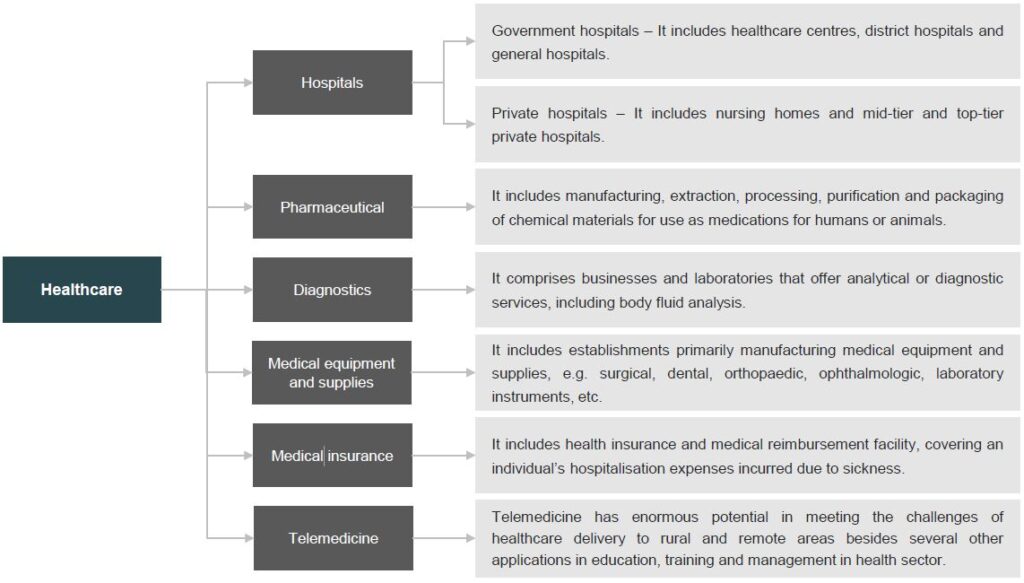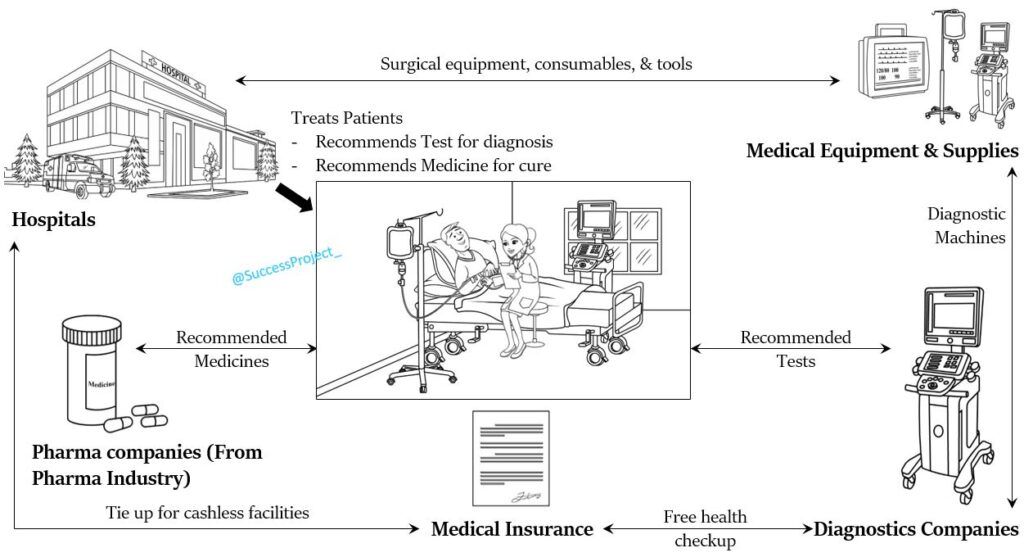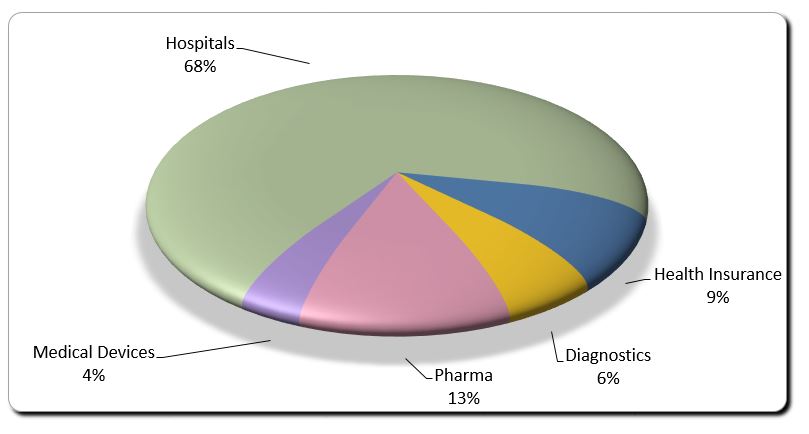This is the first of the multi-part blog series on the Diagnostics Industry. (Featured image credits: https://pixabay.com/photos/laboratory-analysis-chemistry-2815641/)
In the next few blogs, I would discuss about the various dimensions of the diagnostics industry and insights for investors about this industry. This blog will start with a high-level overview of the Healthcare sector. The big picture within the Diagnostics Industry fits. You may read my earlier blog Is Sector and Industry Analysis Important to properly understand the context of Sector and Industry. Subsequent blogs would focus on the Diagnostics Industry.
Brief Background
Diagnostics Industry was of interest to me since 2017. However, I could spend dedicated time only during 2021 to study this industry. The contents that you see in the coming blogs were mined from Annual Reports, Concalls, RHP, Management interviews and a few Twitter spaces by Mr Aditya Khemka and Dr Velumani.
Hi, This is Venkatesh. I write on Personal Finance, Stock Investing, Productivity and Time Management. You will be interested to read more about me and the purpose of my website.
If you are interested in these topics do subscribe to my blogs. You would maximum receive 4 to 5 emails a month.
You might also be interested to read these related articles:
Indian Healthcare Sector Overview
The Healthcare sector in India broadly comprises the following 6 industries as in the image below.

Source data: IBEF Health care reports
I have carved out “Telemedicine” from the above classification and discussed it under “Digital Healthcare”, as that would be the right fitment. We will see the details of other give industries.
Hospital Industry
Government Hospitals
- Primary level health centre catering to a group of villages and present at Taluk level. These are managed by a general physician and do not have many specialists.
- Secondary level health centre located at the district level. These centres have a specialist like cardiologists, dermatologists, urologists etc.
- Tertiary-level health centres located in big cities and constitute medical college hospitals having specialty and super speciality departments. This ranks at the top in the hierarchy. They handle advanced medical procedures: major surgeries, transplants, replacements, and long-term medical aid management for diseases like cancer, or neurological disorders.
Private Hospitals
This includes private nursing homes, mid-tier, top-tier private hospitals, super speciality hospitals and hospital chains.
Pharmaceutical Industry
This includes manufacturing, extraction, processing, purification and packaging of chemical materials for use as medications for humans or animals. The companies in this industry manufacture medicines needed for treatment of illness.
Diagnostics Industry
These are laboratories that offer analytical or diagnostic services, including body fluid analysis.
Medical Equipment & Suppliers
The companies in this industry manufacture medical equipment and supplies like:
- Consumables and disposables
- Equipment and instruments – These instruments and equipment are used by hospitals and diagnostic companies
- Patient Aid
- Implants
- Stents etc.
Medical / Health Insurance
This covers the companies that provide health insurance and medical reimbursement facility, covering individual hospitalization expenses due to sickness.
Below is the high level interaction between these 5 industries in the healthcare sector.

The above 5 industries are discussed in many reports in the context of the Indian Healthcare Industry. However, Digital Healthcare with many smaller sub-segments is emerging in this digital era and will find a bigger place in future Indian Healthcare Industry. I wish to treat this as the 6th Segment and cover some details. Not sure if this could be even the right term. The term ‘Digital’ encompasses wider possibilities. Ignore the precise term and focus on the context of this segment: Interaction of new age digital offerings and technologies with the above 5-sectors.
Digital Healthcare
Digital Healthcare is an umbrella term that covers the use of emerging and advanced technologies in the field of, among others, big data, genomics and artificial intelligence. This is now a niche segment in India. This segment will have huge growth in the coming years. It is going to be very big, and in a nascent stage now. According to Global Market Insights the global digital health market value is expected to surpass $504.4 Billion by 2025 (Source: https://www.prnewswire.com/news-releases/worldwide-digital-health-market-to-hit-504-4-billion-by-2025-global-market-insights-inc-300807027.html). This would include business covering both hardware and software solutions and services. The below sub-segments are a broad overview based on my understanding and may not cover all possibilities.
Telemedicine
This segment uses the communication technology to link healthcare providers with patients. Patients would be evaluated, diagnosed and treated using telemedicine. The main idea is to reduce the gap between patients and doctors who are at distance. In India, this helps to take the healthcare to reach rural and remote areas. Another benefit is that that telemedicine can cut down the time for consulting a doctor by avoiding the need to travel to clinic/hospital. The different practices in Telemedicine are:
- Teleradiology: Involves transmission of X-Ray, CT, MRI images to the doctors at another location – This is the largest market in India
- Teleconsultancy is the second largest market.
- Tele-ICU,
- Telecardiology
- Teledermatology
Note: The sub-branches and possibilities are many. Only a few prominent ones has been listed about. Other includes telemedicine, telepharmacy, telenursing etc.
This is fast picking in India. The eSanjeevani Telemedicine service has enabled patient-to-doctor consultations and doctor-to-doctor consultations. It has touched 76,115,241 patients.

Electronic Health Record
- This is an electronic version of a patient’s medical history, maintained by a provider.
- EHRs may include a range of data, including demographics, medical history, medication and allergies, immunization status, laboratory test results, radiology images, vital signs, personal statistics like age and weight, and billing information.
- This is a very big opportunity given the size of India’s population of 1.39 Billion.
e-Pharmacy
These are online platforms where consumers can purchase medicines without having to visit brick-and-mortar pharmacies. These platforms have improved the convenience of consumers and resulted in a rising demand. A few big notable current players among many others:
- PharmEasy Medlife is currently a leading player with about 30% market share of the total e-pharmacy market in India (Source: https://ww2.frost.com/wp-content/uploads/2019/01/Frost-Sullivan-Outlook-on-e-pharmacy-market-in-India.pdf). They also offer diagnostics (Through Thyrocare) and e-consultation.
- Tata 1mg is into Digital health platform offering Pharmacy, Online diagnostic and eConsulting.
- Reliance Netmeds connects customers to pharmacists and enables door step delivery of medicines
IT systems and software
This includes the IT systems and software programs used in Hospitals, Pharma manufacturers, Diagnostic Companies and in the Medical equipment.
Other Technologies / Trends
- Platforms and applications: Apps that help to book appointments with doctors, clinics and hospitals. One application which became very famous in the recent times is Aarogya Setu App.
- Data analytics: Analysing data related to healthcare and develop meaning full insights. The top 5 diagnostic companies can give 1 million parameters with geo specific, age specific and gender-specific data per day (Source: Speech by Dr. Velumani at a Webinar)
- Wearables: These are biosensors which are worn for monitoring health parameters. The accumulated data can be utilized for Data analytics
- Artificial intelligence, helps to get into predictive mode
- Use of patient history information to predict future
- Wireless Medical Devices
Note: The above contents are just to give a high-level understanding of the possible sub segments in Digital Healthcare. The opportunity size is very big with huge opportunity for many players. The content provided here does not justify the true picture of this segment. I am not covering in-depth, as it deviates from the Diagnostic Industry study.
Share of Different Industry Segments
The Indian healthcare sector is expected to record a three-fold rise, growing at a CAGR of 22% between 2016–22 to reach US$ 372 billion in 2022 from US$ 110 billion in 2016. (Reference: IBEF Healthcare Presentation July 2022)
The pie chart gives the share of revenue for the different segments.

Source data: Metropolis Healthcare 2019-2020 Annual Report.
Import and Export Dynamics of these 5 Industries
Hospital Industry
- Majorly cover Indian patients.
- Due to availability of affordable and quality health care, the export component, i.e. Medical Tourism, is likely to increase in future.
- Though the treatment is done in India, the patients come from different countries and hospital make revenue from them.
- The payment from such patients comes from overseas to Indian hospitals.
- Hence Medical Tourism can be treated as an export market segment.
Pharma Industry
This industry cater both Indian and overseas markets, but a higher weightage on exports
Medical Equipment and Supplies
- This segment is bit unique in this dynamics – It is dominated by imports.
- The equipment, instruments and reagents used in the Diagnostic segment is majorly dominated by MNCs.
- Even as on 2020, almost 90% of India’s need in the diagnostic sector is imported from foreign countries (Source: Speech by Dr. Velumani at a Webinar)
- The same could be the case for supplies to Hospital i.e. Equipment, instruments used in ICU, Surgical instruments etc.
To close…
This blog covered a high-level overview of the Healthcare sector and different industries within it. From the next blog, the focus would be only on the Diagnostics industry covering:
- Overview of the Indian Diagnostic Industry
- Diagnostics Industry Market Segments (Part 1, & Part 2)
- Business segments & sub-segments in Pathology and Radiology
- Analysis of different listed players and much more…
Hope you found this blog useful. Do share my blogs with your friends, peers and fellow investors.

